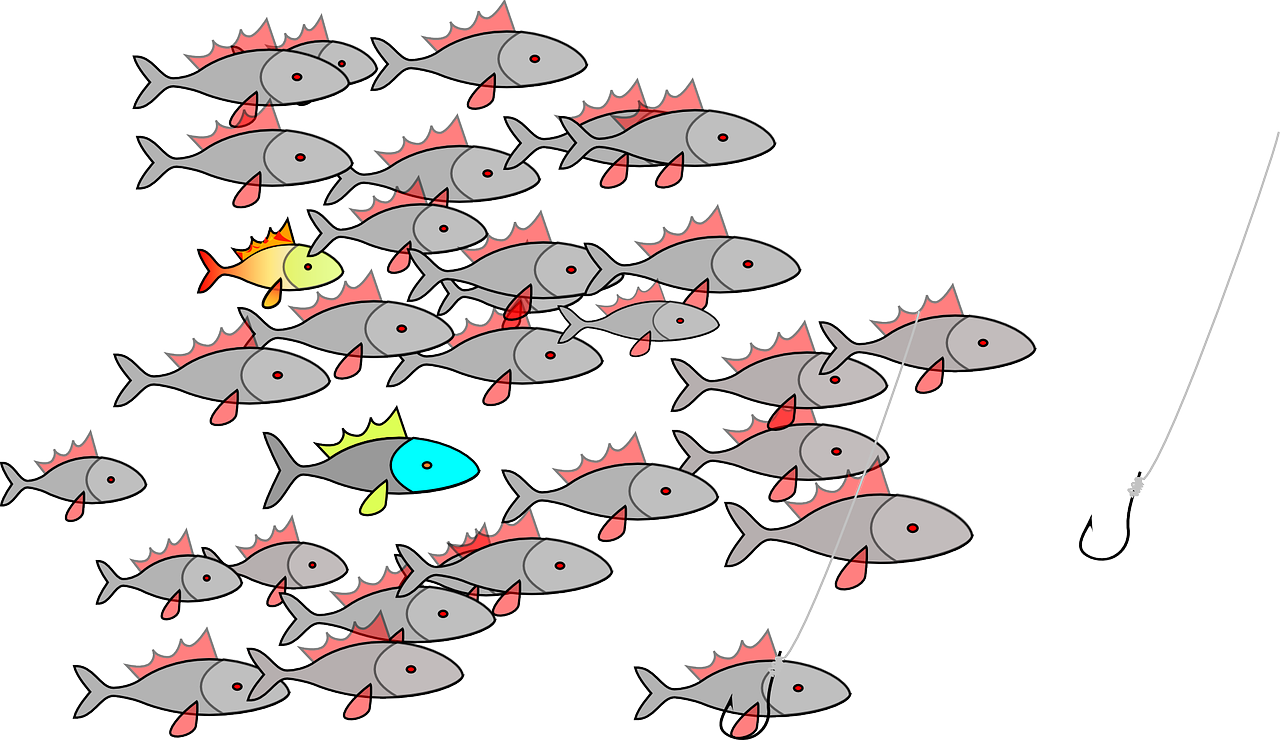
Image by OpenClipart-Vectors from Pixabay
Most content marketers and PR professionals roundly ridicule clickbait headlines At least a few say clickbait is unfairly condemned and is sometimes appropriate and effective. (The clickbait headline for this blog post is entirely intentional. Whether it’s appropriate is for readers to determine.)
Tabloid Sensationalism
Sensationalist headlines occurred in supermarket checkout aisles decades before the internet. Tabloids plastered their front pages with shocking headlines like “Half-Man Half-Dog Baffles Doctors” (Weekly World News) or “HEADLESS BODY IN TOPLESS BAR” (New York Post) or “Alien in Slammer after Fistfight with Bill – over Hillary.” (Weekly World News) or “Russians Halt Aging Process” (National Enquirer).
The headlines sold papers. They also produced many libel suits by celebrities like the successful lawsuit Carol Burnett brought against the National Enquirer for falsely reporting she was drunk and boisterous in a 1976 public meeting Henry Kissinger, then U.S. Secretary of State.
Even respected news tabloids including the New York Daily News, New York Post, Chicago Tribune and San Francisco Examiner used sensational headlines – and still do to this day. Shocking, often misleading headlines still sell newspapers – and clickbait headlines produce more clicks than standard headlines. That continued use possibly demonstrates that clickbait isn’t entirely bad.
Sensationalism on the Internet
The worst of online clickbait headlines drive clicks by providing inaccurate or incomplete information. By withholding information, they create what’s called a curiosity gap that pushes the gullible to click on blog posts or ads. They employ words like “shocking” and “unbelievable” and phrases like: “You’ll never guess what happened next,” “You won’t believe” or “People were stunned.”
The headlines attract clicks with misleading or exaggerated claims but fail to deliver promised or implied content. Viewers learn that what happened was not very shocking after all and no one was really shocked.
Content crafters, marketers and readers may disagree over what defines clickbait. Some call all over-hyped, sensational headlines clickbait. On the other hand, not all sensationalist headlines are clickbait. Similarly, not all headlines that draw clicks are clickbait. Whether it’s clickbait sometimes depends if the content fulfills expectations the headline raises.
Why Clickbait is Evil
Clickbait annoys people, destroys trust in the brand, and causes bounce rates to soar. In the first place, it attracts a broad audience, mostly people who aren’t interested in your brand. It’s an outdated strategy. Internet users are now wise to the trick. Since the early days of the internet, tech giants like Facebook and Google have updated their algorithms to penalize clickbait. Google also updated its misrepresentation policy this summer to ban clickbait ads.
“You can glean some lessons about headline-crafting from it, but don’t rely on it,” urges Allie Wolff at Benchmark One. “Be original, creative, clear and useful. What happens next will shock you.”
BuzzFeed, often accused of clickbait, stopped using the tactic years ago, says its editor-in-chief, Ben Smith. It stopped working around 2009. While clickbait remained abundant on the web, BuzzFeed kept that knowledge to itself for a competitive advantage.
Readers feel tricked and annoyed when they click on a story that doesn’t deliver, causing publications to lose credibility, Smith says. A main goal of BuzzFeed (and other publications) is to motivate viewers to share posts on social media. They don’t share content when they feel tricked.
Why Clickbait is Good — Sometimes
Some marketing experts say clickbait isn’t always bad. “Clickbait has a negative connotation associated with it, because we’re on high alert for the bad kind of clickbait: the empty hyperbole and salacious claims sold by swindlers and tricksters,” writes Brad Smith, founder of Codeless, a B2B content creation company. “Those people give a bad name to clickbait, because it’s not all bad.”
When done correctly, it offers an excellent way to gain attention and motivate people to view products, Smith argues.
Clickbait defenders may define the term differently than those who vehemently oppose the practice. They may consider flamboyant adjectives as clickbait, especially in listicles, as in “10 Amazing Hacks to …” The hacks might not be truly amazing, but readers may be happy if they’re helpful
Clickbait Headline Writing Lessons
Clickbait, or rather clickbait headline formulas, can still attract and satisfy readers, agrees Jason Hennessey, entrepreneur and SEO expert. Clickbait headlines often start with “This is why …” or “This is how …”
The phrases can work if headlines are informative and specific rather than broad and vague. “Avoid titles like “This Is Why You’re Losing Money” or “This Is Why You’re Lonely”, as these are too broad and cryptic,” Hennessy advises. “Instead, aim for headlines like “This Is Why You’re Not Seeing an ROI on Your Marketing” or “This Is Why Business Owners are Investing in Bitcoin.'”
Bottom Line: Marketers and PR pros generally disdain clickbait as unsavory, outdated and ineffective. But some disagree on what defines clickbait and argue that the practice is unfairly criticized. Content marketers can improve headline-writing skills by studying and adapting typical clickbait tactics, they say.
Final Judgment: The parody clickbait headline encapsulates all that’s wrong with clickbait headlines – and why PR and marketing should avoid them.
Schedule a Free Online Demo of the Glean.info Media Monitoring & Measurement Dashboard
William J. Comcowich founded and served as CEO of CyberAlert LLC, the predecessor of Glean.info. He is currently serving as Interim CEO and member of the Board of Directors. Glean.info provides customized media monitoring, media measurement and analytics solutions across all types of traditional and social media.




